Naples has a reputation for trash and chaos which is not entirely undeserved. While the vibrant city has been cleaned up in the last few years, it certainly has not lost any of its edge, so one of my favorite places to escape from the speed and noise is inside the Santa Chiara monastery complex.
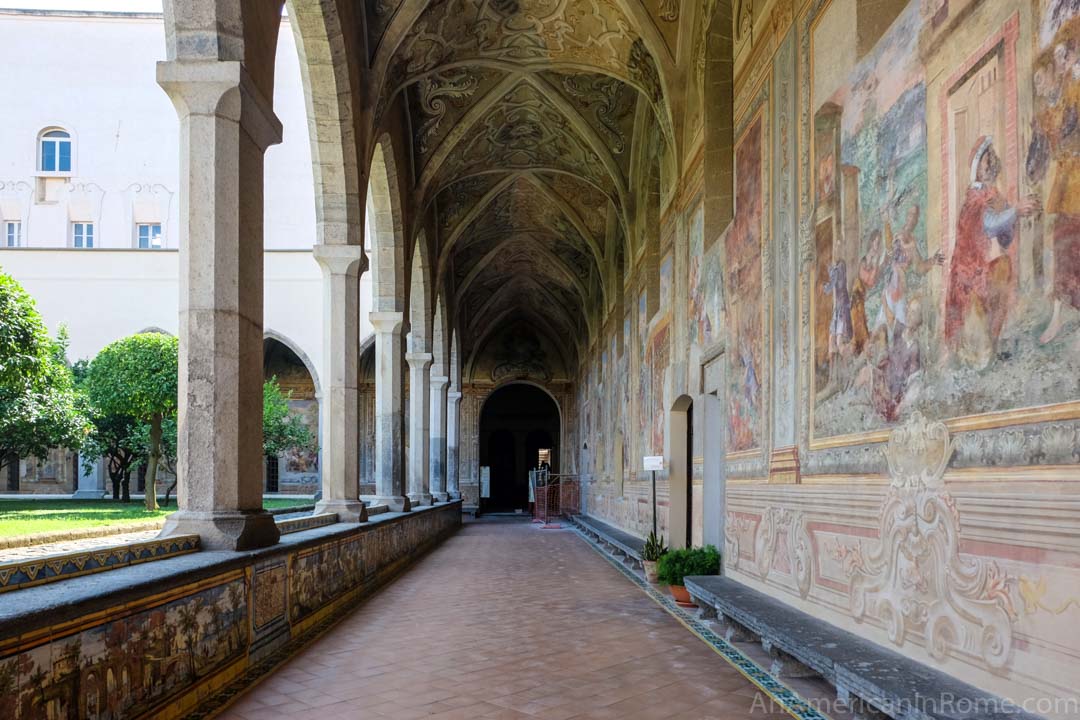
Officially known as the Complesso Monumentale di Santa Chiara (the monumental complex of Santa Chiara), the beautiful monastery has a basilica and a small museum with a religious library. However, Santa Chiara is most famous for its elaborately decorated cloisters.
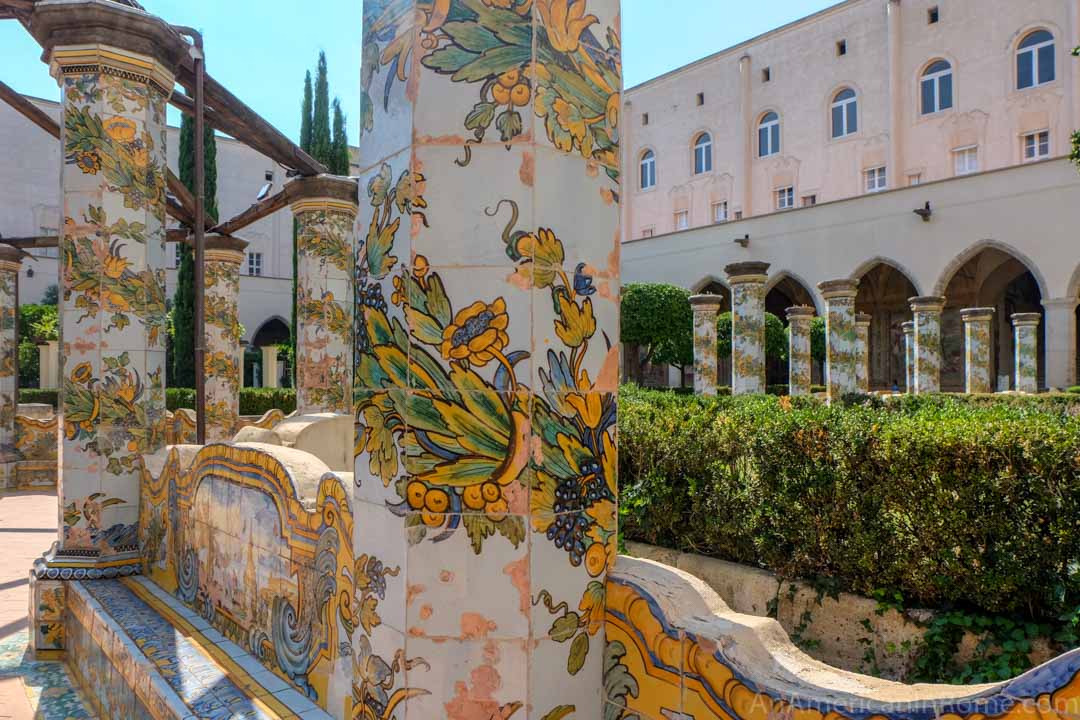
The Basilica of Santa Chiara was destroyed in 1943 when it suffered a direct bomb hit by Allied Forces during WWII but the tiled cloisters remained untouched.
Before that, Naples was controlled for centuries by a string of foreign rulers. Santa Chiara was constructed by Robert the Wise, King of Naples, for his wife Sancha of Majorca, who were a part of the French Kingdom of Anjou.
The complex was built between 1313-1340 so the oldest features date back to the 14th century but the boldly decorated cloisters were really designed in the 17th century.
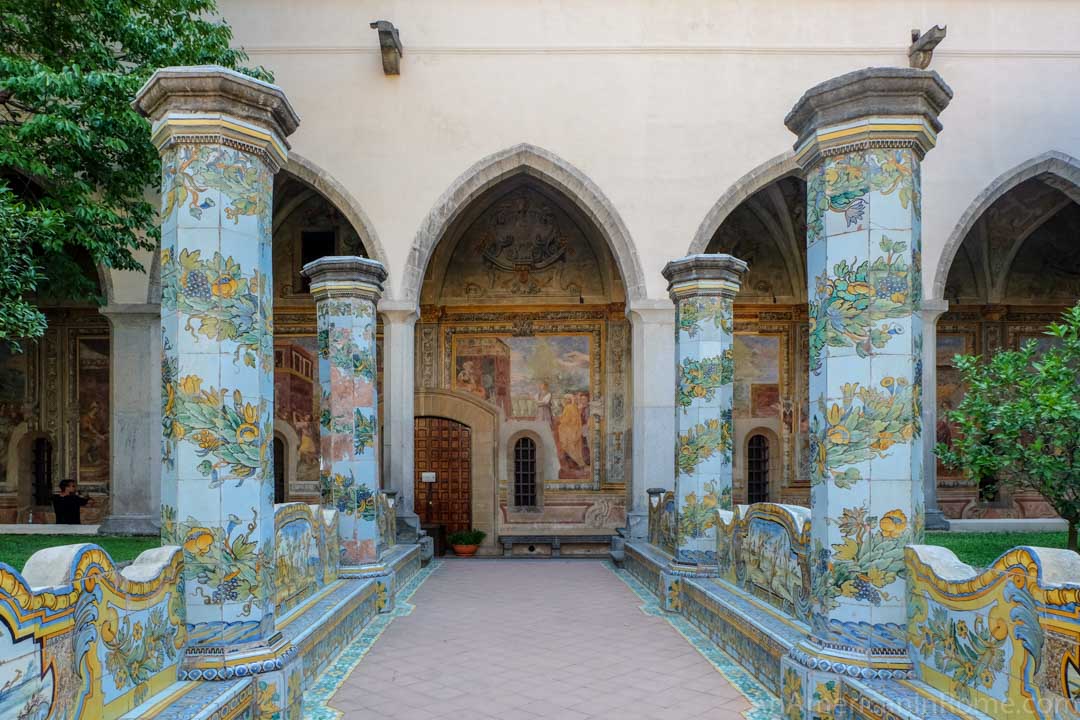
The Santa Chiara cloisters are made up of 72 octagonal columns covered in hand-painted Majorca tiles with benches connecting each of the pillars. Every single tile is unique, and the combined effect is mesmerizing.
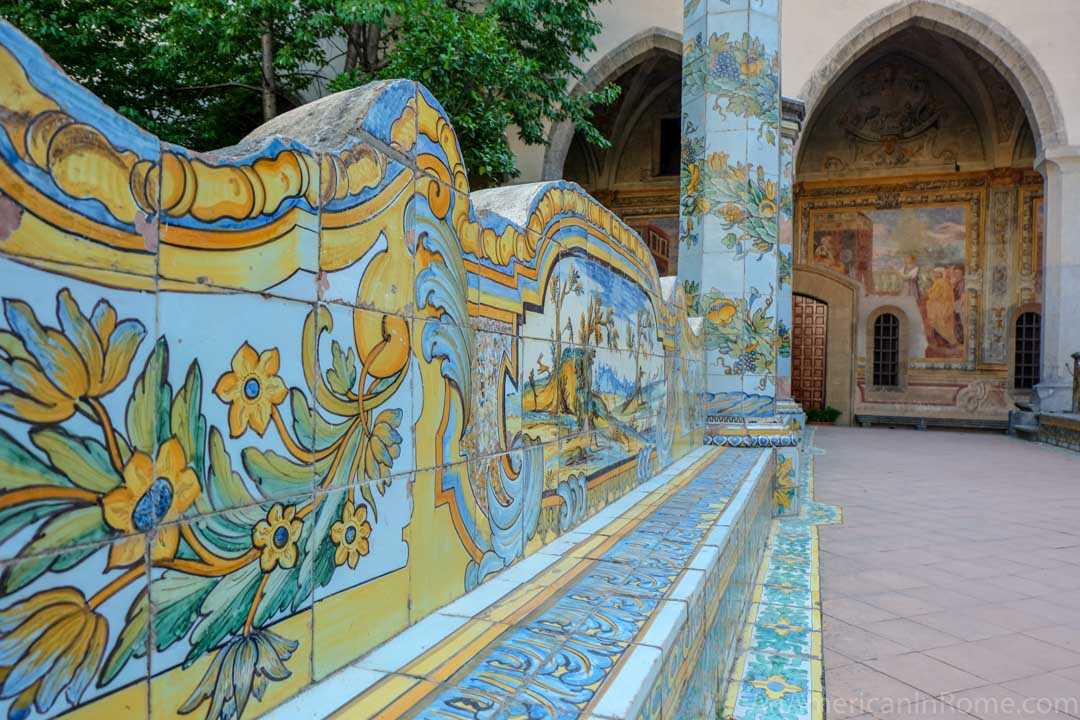
Most of the details on the tiles are decorative, with eye-catching blue and gold flowers and brilliant yellow lemons and lush vines climbing the pillars. In between are scenes of rural life or depictions of the Mediterranean seaside.

Unfortunately, some of the tiles are starting to degrade but the beauty of the cloisters in undeniable.
There are shaded pergolas, fruit trees and even blooming lavender in the gardens – a verdant contrast to the stark streets of the city center outside the monastery walls.
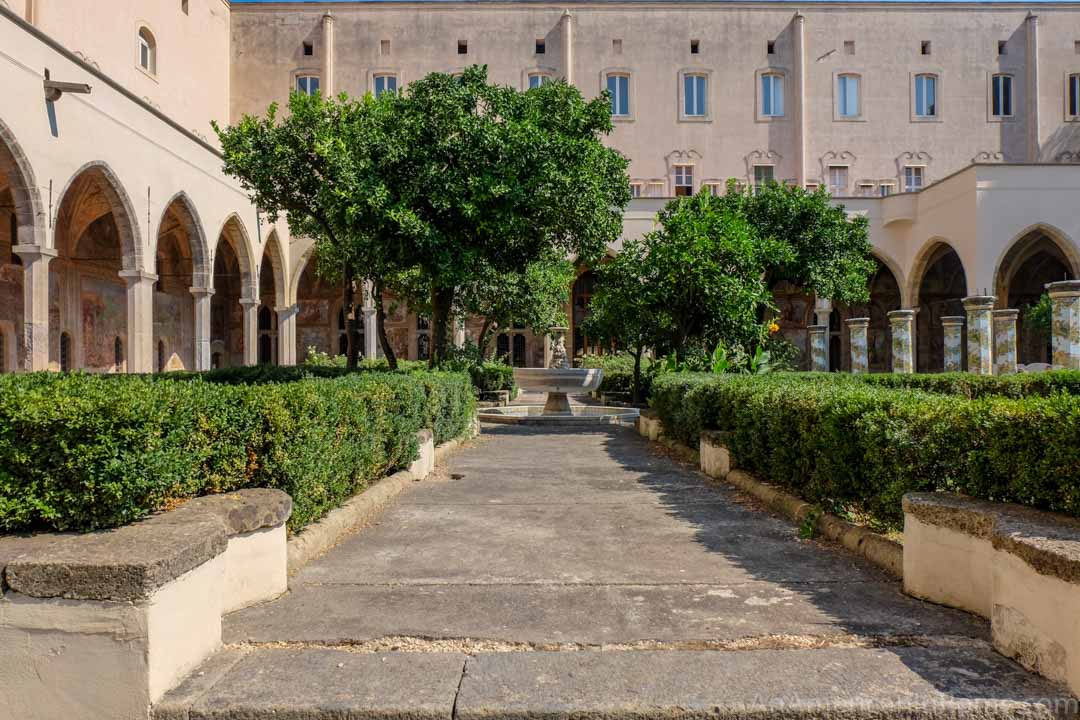
Cloisters are a space for quiet reflection and prayer, but I can only imagine how distracting these gorgeous decorations would have been to the nuns who were tucked away here to escape the worldly life outside.

In addition to the Rococo-style Majorca tiles, the cloisters have amazing (though faded) frescoes gracing each of the porticoes that surround the central courtyard.

The church is free to enter but it is also worth the €6 ticket fee to explore the cloisters. The unique beauty of Santa Chiara is here, outside, among the painted tiles.

Looking for other beautiful places in Naples? You must visit the Palazzo Reale, and then go down to the seaside to admire the near-ruins of Palazzo Donn’Anna.
Complesso Monumentale di Santa Chiara
Via Santa Chiara, 49c (across from chiesa del Gesù Nuovo)
Naples, Italy
Open: Monday – Saturday 9:30 am to 5:30 pm and Sunday 10 am t0 2:30 pm
Price: €6 for the cloisters; the church is free.

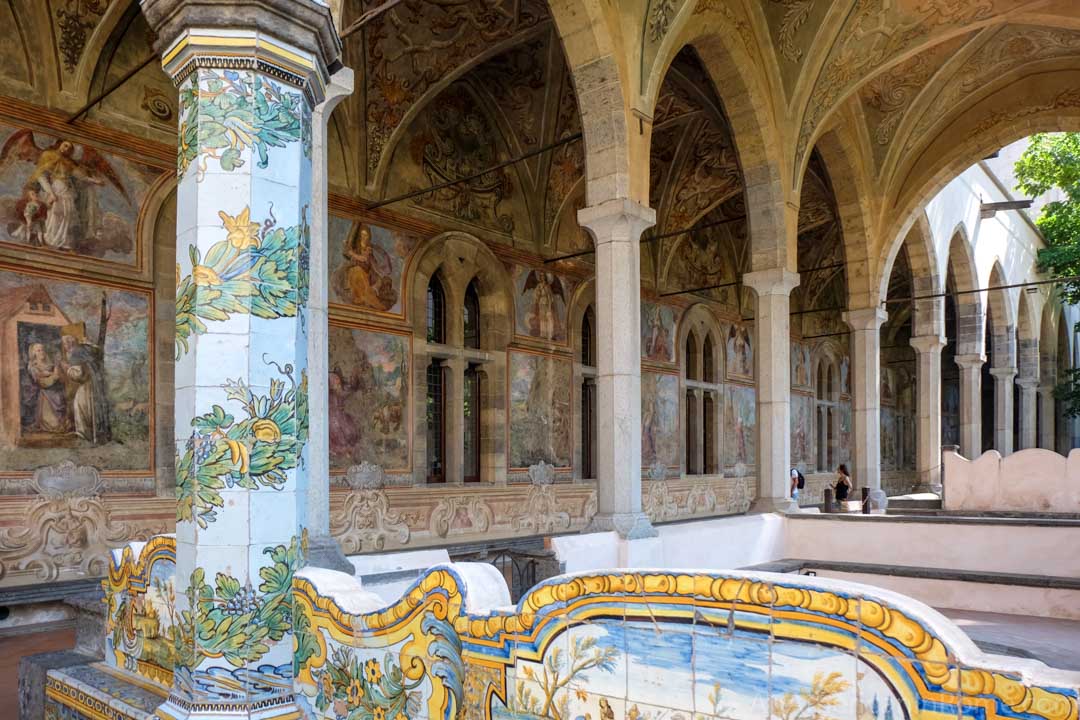




Nice summary. We were also struck by the beauty of the place. I am trying to reach their book store to buy the book illustrating the Bible frescoes from the cloister walls.
But my emails keep getting returned. Have you an idea of how I can buy it. No have it sent to me in the USA?